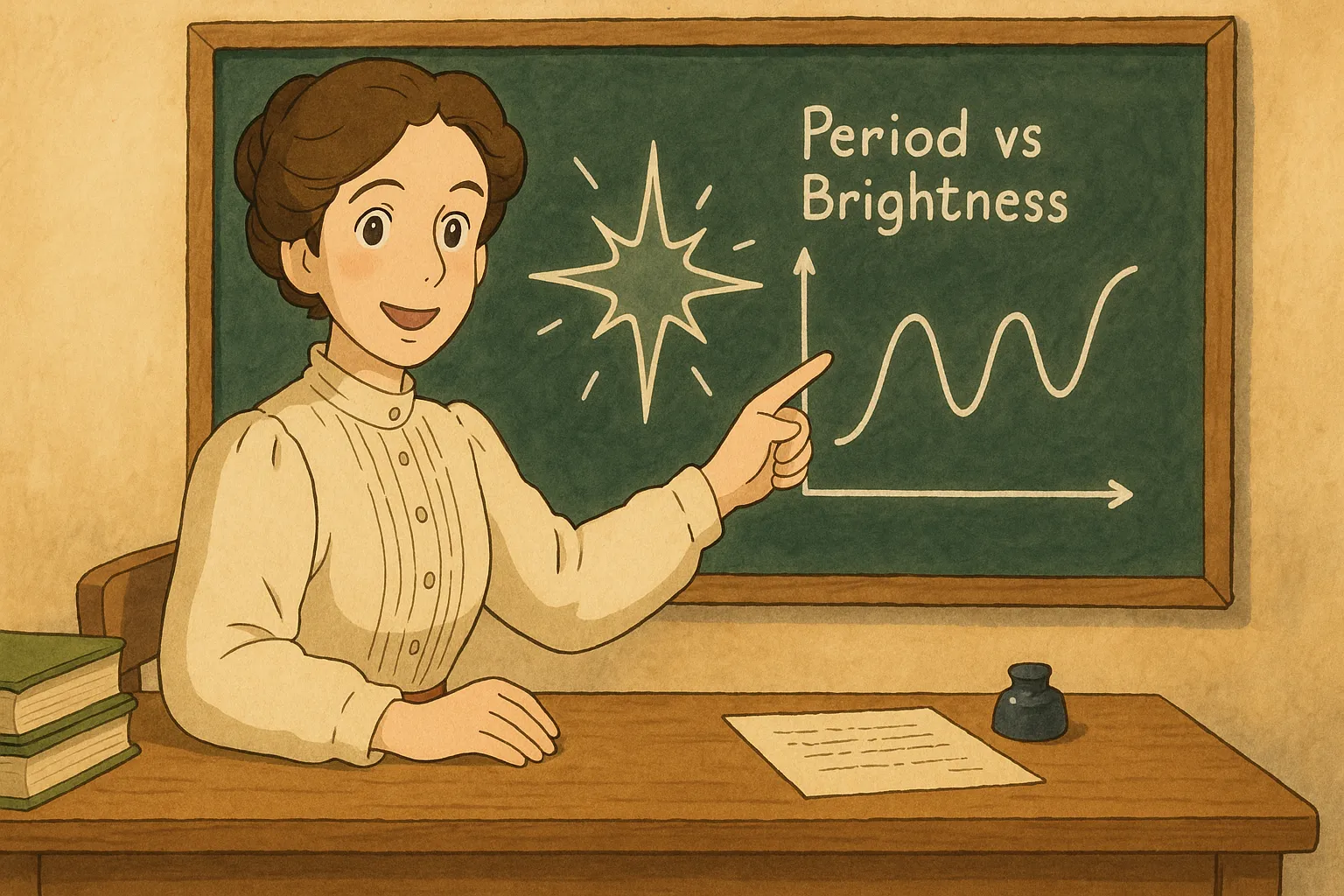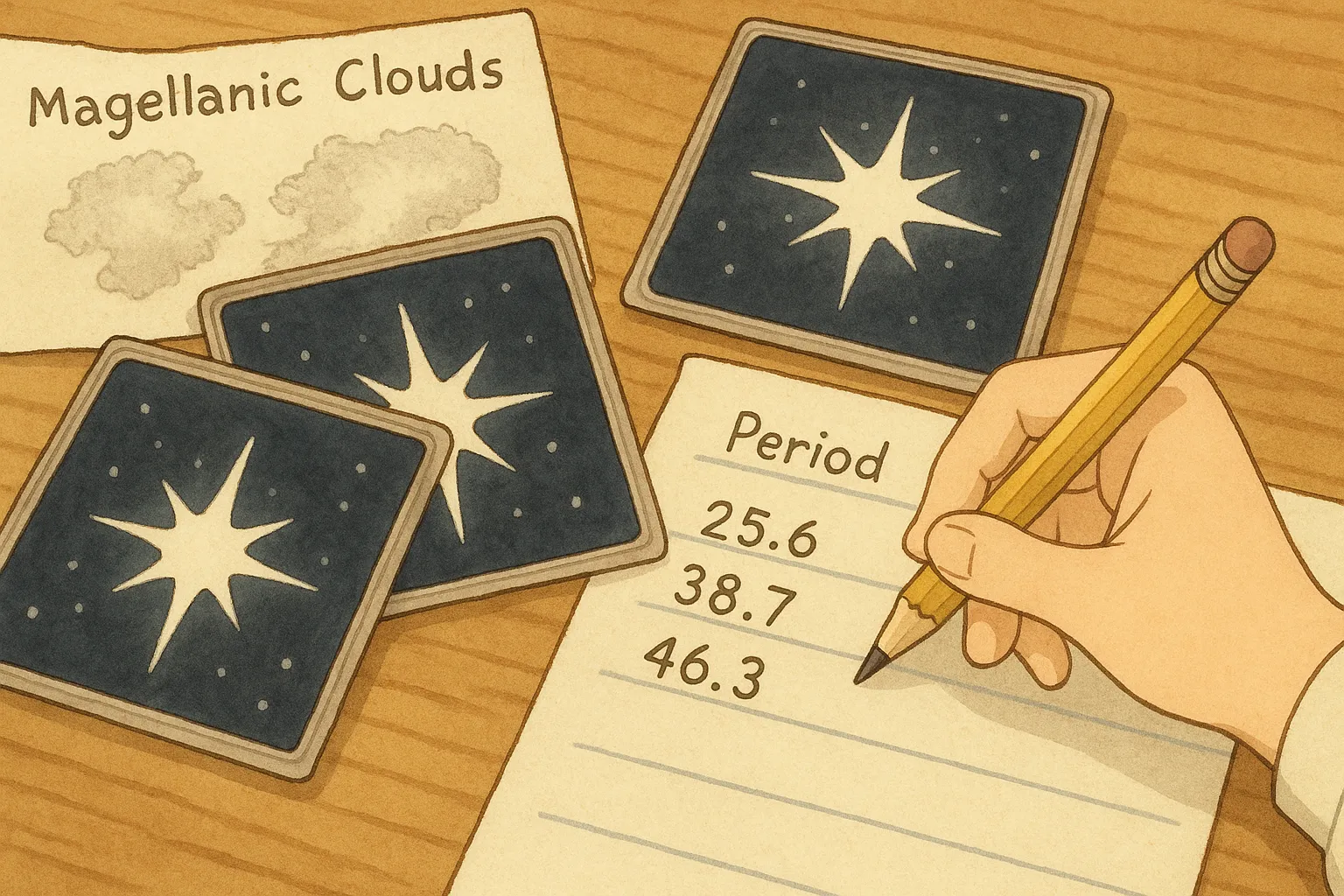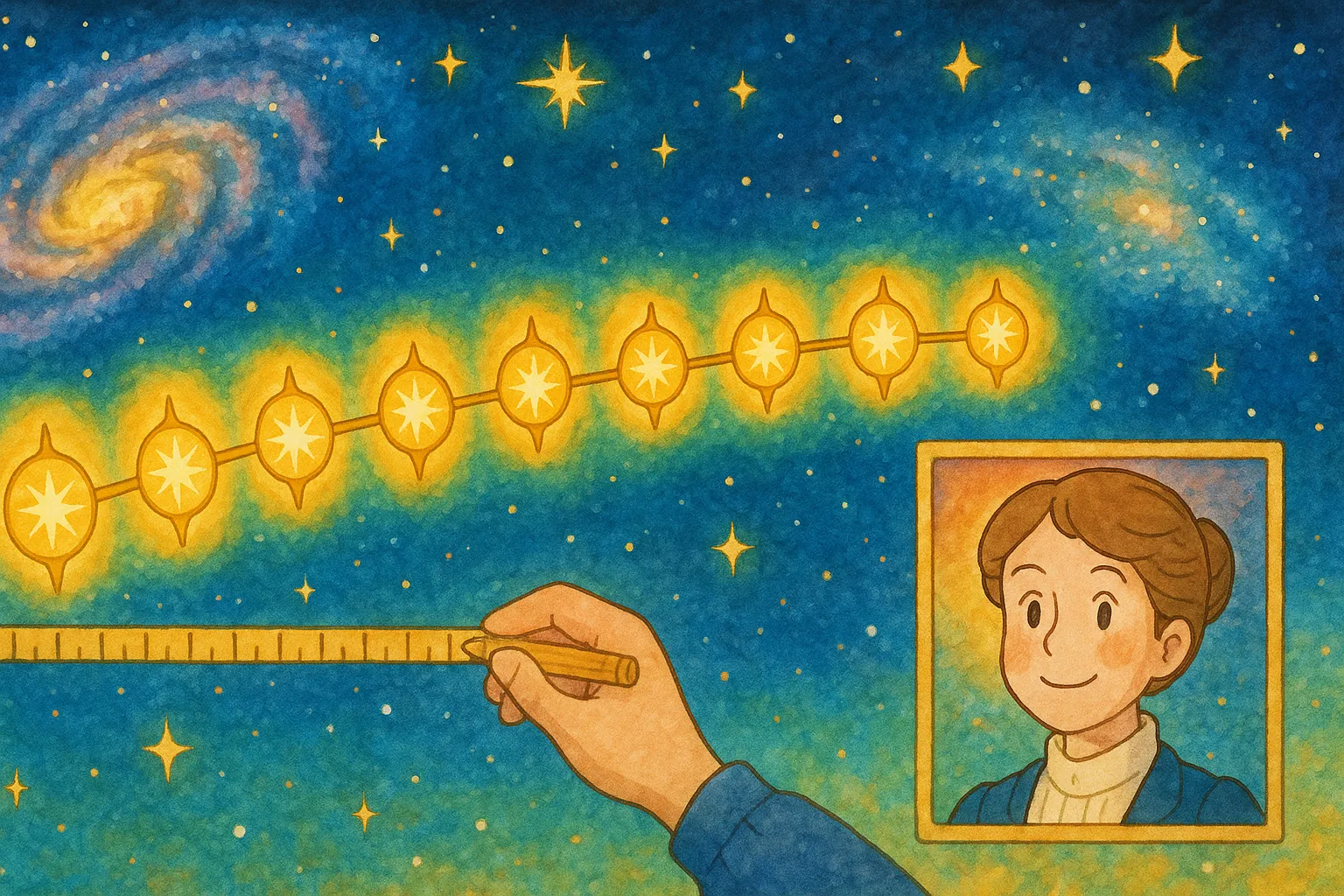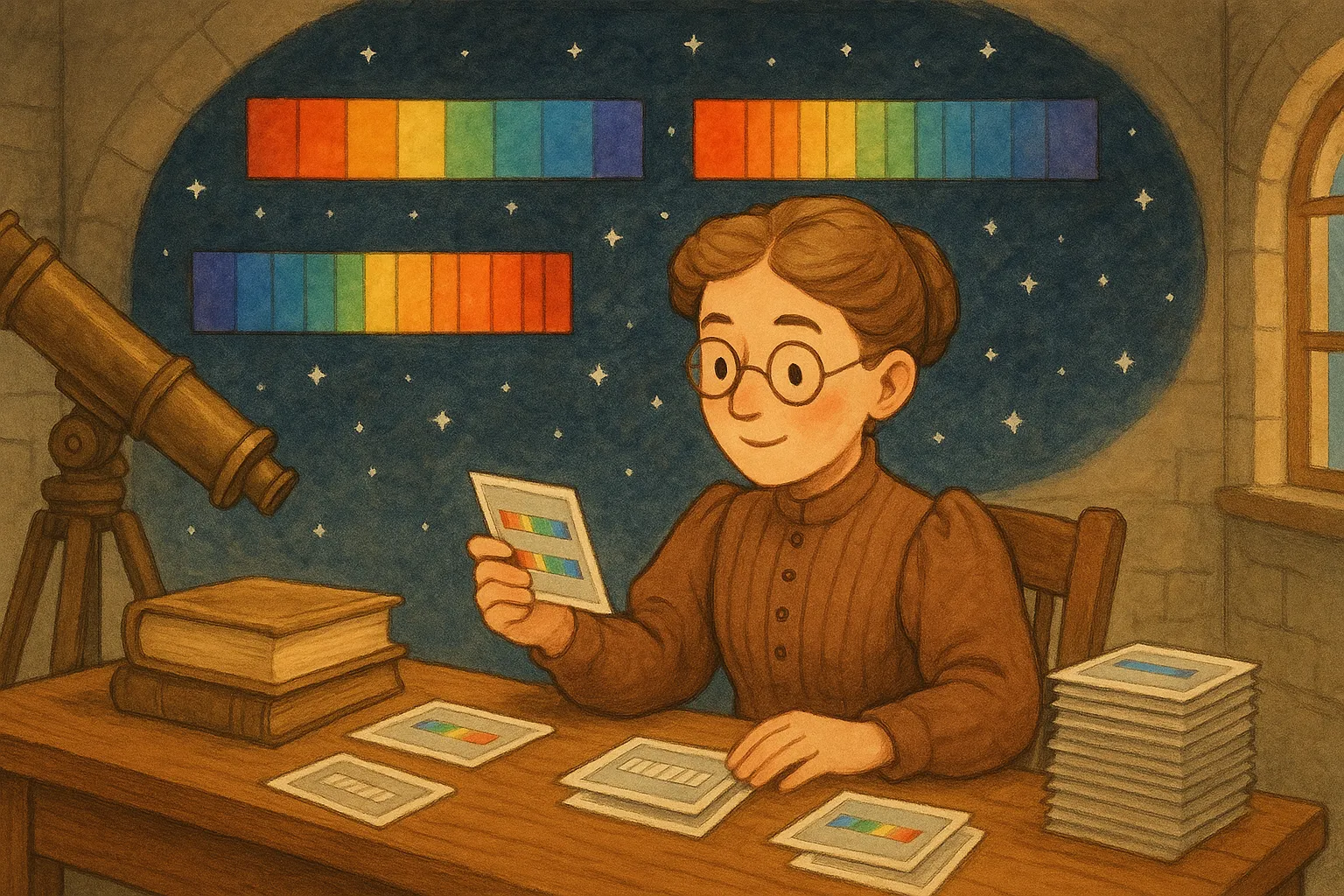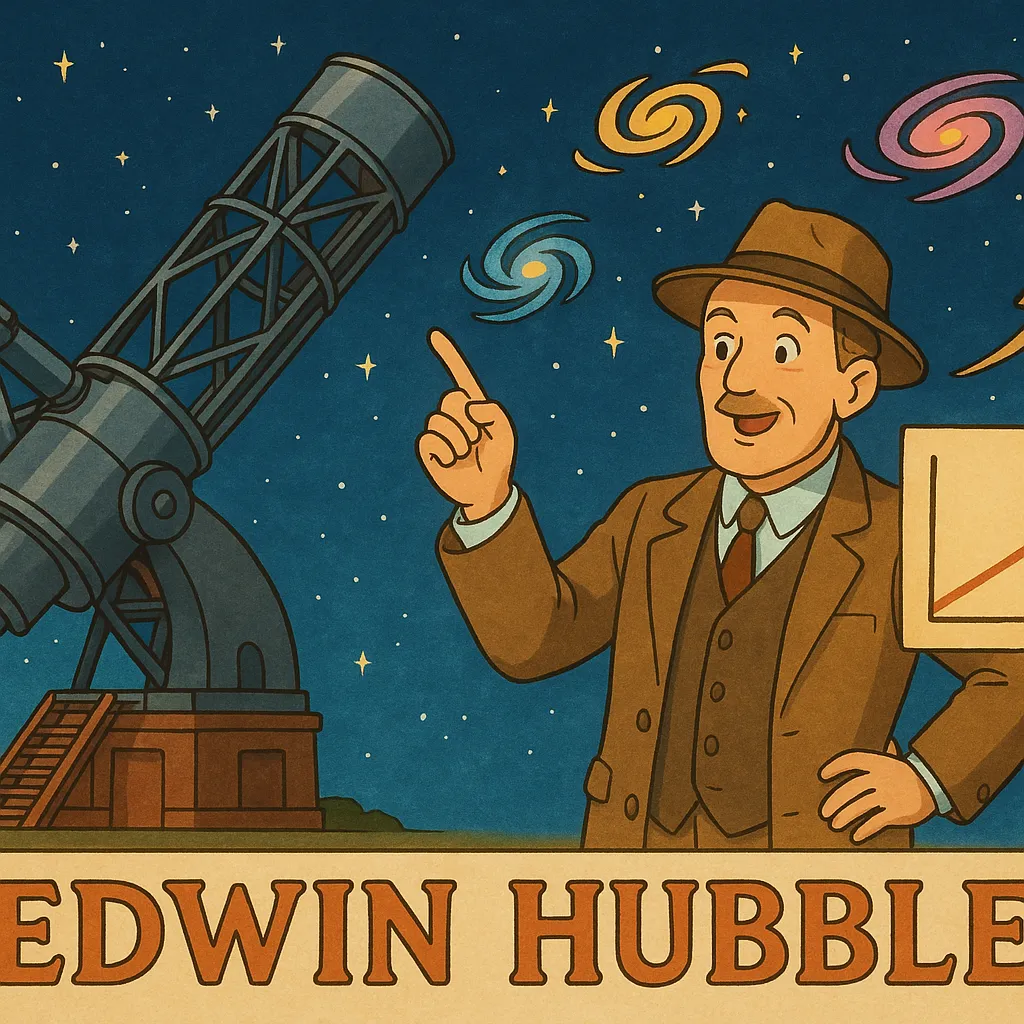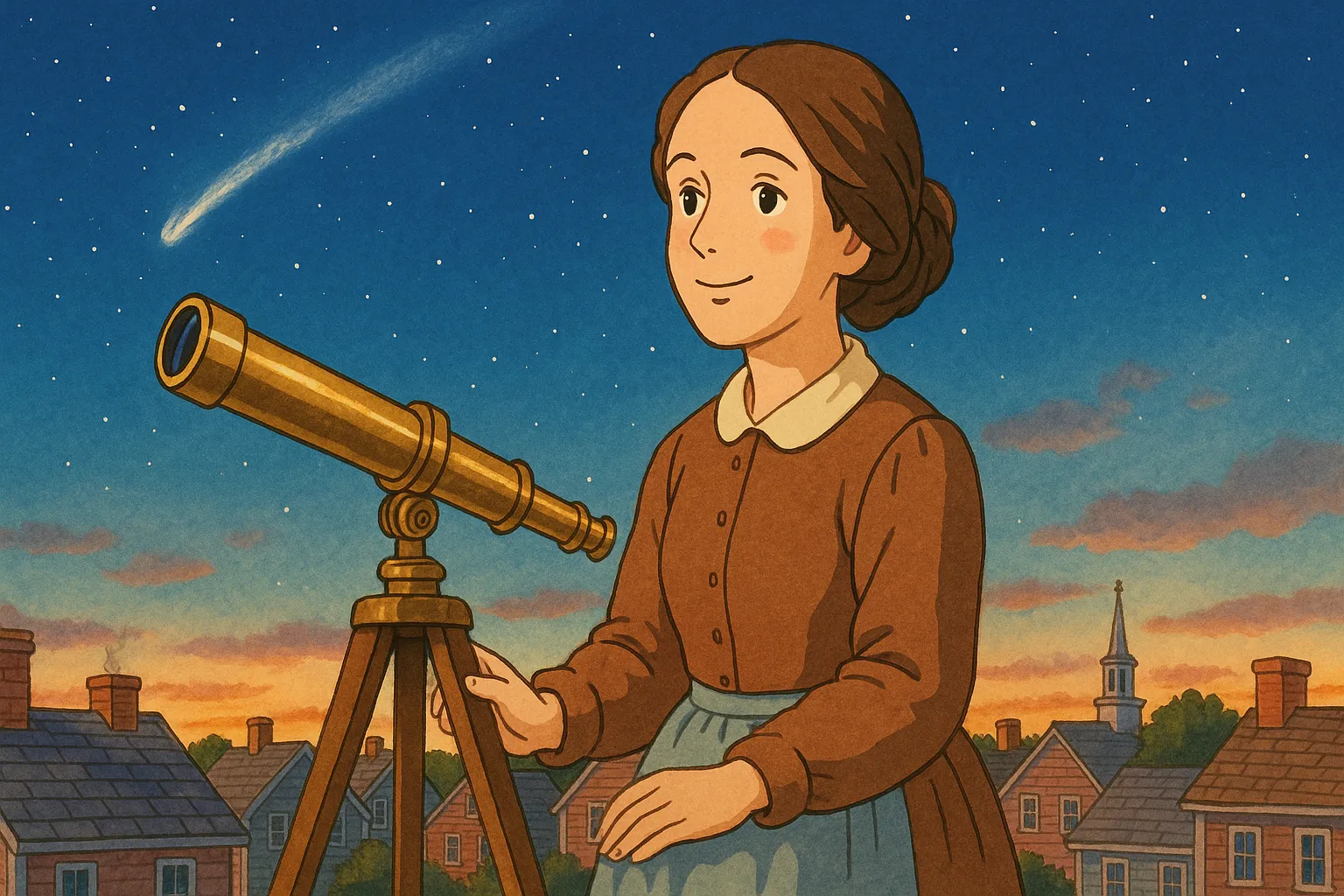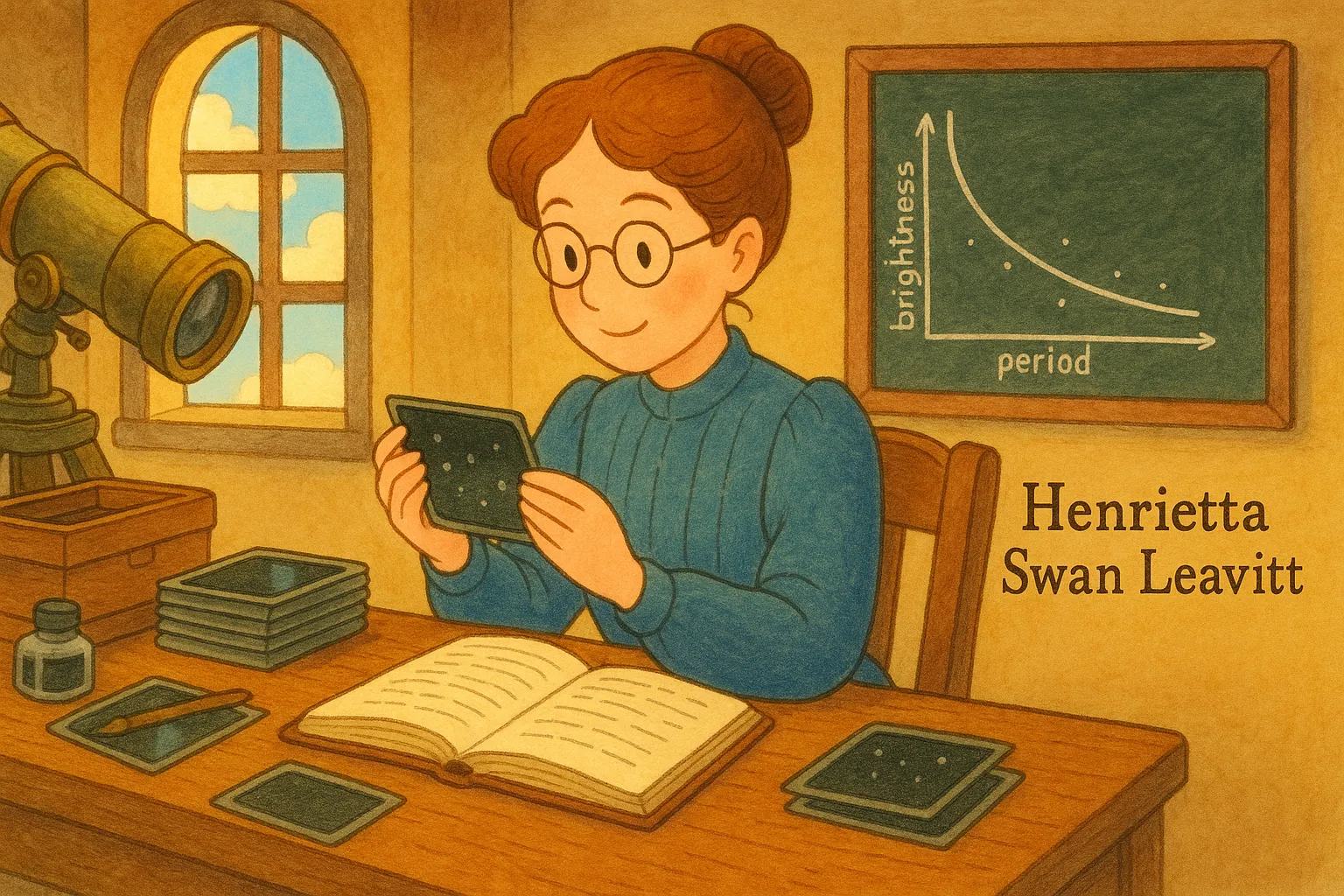
Frequently Asked Questions
What is a Cepheid variable star?
A Cepheid is a star that gets brighter and dimmer in a steady cycle. The length of that cycle (the period) tells astronomers how bright the star truly is.
Why were women called 'computers' at Harvard?
Before electronic computers, people called 'computers' did careful calculations and measurements by hand. Henrietta was one of these skilled women who measured stars from photographic plates.
Did Henrietta receive big awards for her discovery?
Her papers were published and widely used, but she did not win a Nobel Prize. Later astronomers and historians recognized her crucial role and named the period–luminosity rule 'Leavitt's Law.'
How is Leavitt's discovery still important today?
Astronomers still use Cepheids as reliable 'standard candles' to measure nearby cosmic distances and to help calibrate other methods for mapping the universe.
